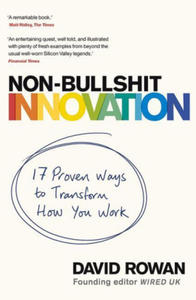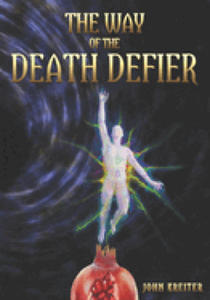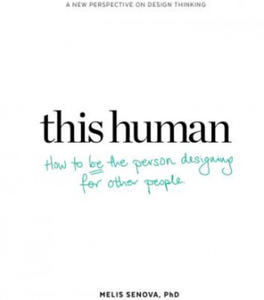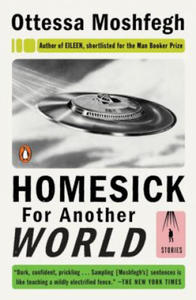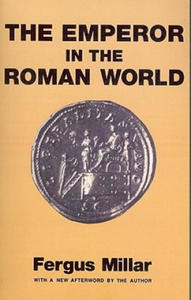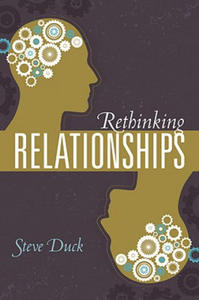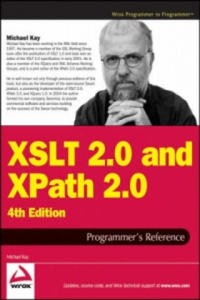libristo way of the world and other ways 9656320
- znaleziono 153 produkty w 13 sklepach
The Way Of The World And Other Ways
Książki Obcojęzyczne>Angielskie>Fiction & related items>Romance
0x00aef66800000000
Sklep: Gigant.pl
Non-Bullshit Innovation: 17 Proven Ways to Transform How You Work BANTAM PR
Książki / Literatura obcojęzyczna
'In this remarkable book, David Rowan tells a story of transformation: how an organisation has found a new way of doing things through innovation driven by ruthless entrepreneurial imagination. What is especially useful is that he does not just stick with small startups, let alone dreamy "inventors". He finds innovation in big companies and even within governments.' - Matt Ridley, The Times__________________________David Rowan travels the globe in search of the most exciting and pioneering startups building the future.He's got to know the founders of WhatsApp, LinkedIn, Google, Spotify, Xiaomi, Didi, Nest, Twitter and countless other ambitious entrepreneurs disrupting businesses in almost every sector. And yet too often the companies they're disrupting don't get it. They think they can innovate through jargon: with talk of change agents and co-creation gurus, ideas portals and webinars, make-a-thons and hackfests, paradigm shifts and pilgrimages to Silicon Valley.It's mostly pointless innovation theatre - corporate nonsense that has little to do with delivering real change. But during this quest he's also discovered some genuinely exciting and transformative approaches to innovation, often in places you might least expect. Get ready for:* The airline that rewards passengers for walking their dog* The bank that performs surgery* The country that's an app store And many more.Packed full of tips for anyone looking for radical ways to adapt and thrive in the digital age, this carefully curated selection of stories will reveal ideas for creating genuine innovation from some of the world's most inspiring leaders. ___________________________
Sklep: Libristo.pl
Spalona Żywcem Wyd. Kieszonkowe - Souad
Książki & Multimedia > Książki
Opis - Pierwsze na świecie świadectwo ofiary zbrodni honorowej. Miała siedemnaście lat i zakochała się: zhańbiła rodzinę. Więc rodzina wydała na nią wyrok śmierci... Pokochała go pierwszą miłością. Myślała, że się z nią ożeni. Ale ukochany zniknął, a ona odkryła, że jest w ciąży. A w jej świecie to najcięższa zbrodnia... W zapomnianej przez Boga wiosce w Cisjordanii kobiety są warte mniej niż zwierzęta domowe. Tu mężczyzna jest panem życia i śmierci żony, córki, siostry. Brat może bezkarnie zabić siostrę, matka - córkę, kolejną bezużyteczną dziewczynkę, jaka się urodzi. Tu kobiecie odbiera się godność, a nawet życie zgodnie z odwiecznym obyczajem i uświęconą tradycją. A śmierć jest karą dla dziewczyny, która zhańbi rodzinę. Tak jak Souad. Wyrok wydaje jej ojciec. Szwagier dokonuje egzekucji. Oblewa Souad benzyną i podpala... SOUAD przeżyła - cudem, ale rodzina usiłowała zabić ją nawet w szpitalu. Na zawsze jednak pozostanie straszliwie okaleczona - na ciele i duszy. I wciąż musi się ukrywać; dopóki żyje, jej rodzinę okrywa hańba. Spalona żywcem, opublikowana pod pseudonimem szokująca opowieść o piekle, jakim było jej dzieciństwo i młodość, stała się międzynarodowym bestsellerem. Wydana w 37 w krajach książka przerywa tabu milczenia wobec istniejącej nadal w krajach muzułmańskich barbarzyńskiej tradycji. Nieludzkiego obyczaju, prawa mężczyzn, na mocy którego co najmniej pięć tysięcy kobiet pada co roku ofiarą zbrodni honorowej. Nazwa - Spalona Żywcem Wyd. Kieszonkowe Autor - Souad Oprawa - Miękka Wydawca - Amber Kod ISBN - 9788324159406 Kod EAN - 9788324159406 Wydanie - 1 Rok wydania - 2016 Tłumacz - 31182,maria rostworowska; Format - 110 x 175 x 14 Ilość stron - 224 Podatek VAT - 5% Premiera - 2016-06-23
Sklep: InBook.pl
Way of the Death Defier Independently Published
Książki / Literatura obcojęzyczna
All biological life must end...but that is not the end of us!We are small specks of light scattered throughout space and time.We are tiny flames extended, pushed, and moved away from a great brilliance that is our source. We are a probe, a dream, a great desire, that is given a chance to be all that it could possibly be in dimensions far away from that brilliance.But who are we really?What is that brilliance? What is God?What is life and death?What happens after we die?What is the nature of heaven and hell?What is reincarnation? Karma?Why do we age? Why is life so hard? Are we missing something?What are ghosts?Is true immortality possible?In this last book in a trilogy of course books that began with The Magnum Opus, all of these questions will be answered from the point of view of the inner alchemist.Here you will find answers to the nature of God, the gods, heaven, hell, reincarnation, karma, the machine of death, Barbelo, the spice, the oversoul collective, and the garden of the gods.In this book I show you how to cross the sixth and the seventh room of the projectionist and attain true immortality!Whether you are a practicing inner alchemist and adept, or a curious and holistic person who needs to see the whole picture in order to understand the challenge of the life and death cycle in your own individual ways, here you will find many of the answers that you seek, including how to begin to learn to 'see' and perceive these things directly yourself. Some have asked why each course is presented as a book. Why not make a video course or some other digital presentation that is more popular in this era? And the reason for this is quite simply: time.I have been around long enough, and my senses have become keen enough to see some of the intricacies of this world. Through such experience and perceptions, I have seen things peak and wane, and I have seen many things lost within the medium of time.Videos and digital formats require complex systems to work and be maintained, and such complex systems are usually the first to fall, or change when exposed to the brutal torrents and extreme pressures of time.But a print book, especially a Harcover book with the longest shelf-life, is something that you can keep in your personal library for a lifetime with only moderate care.
Sklep: Libristo.pl
This Human: How to Be the Person Designing for Other People BIS Publishers B.V.
Książki / Literatura obcojęzyczna
There are many great design books in existence that teach us about design process, tools and methods. With the increasing popularity of design thinking and human-centred design we've also seen more material discussing various aspects of the practice. One missing aspect, almost in an ironic twist, is what it takes to be the actual person who is doing the designing.The name 'This Human' is referring to that person. The person who needs to observe to gain insight, to makes sense of their observations in a way that isn't biased by their own world views. The person who needs to communicate in many different ways with many different intentions to communicate information which is often hard to access, difficult to grasp and just not that tangible. The person who is so passionate about having a positive impact they become exhausted one third of the way into their project. This book helps these people to learn more about themselves and how to think and be in their practice of design-to help them grasp all that is going on inside that then influences their creations.
Sklep: Libristo.pl
Homesick for Another World Penguin Books
Książki / Literatura obcojęzyczna
An electrifying first collection from one of the most exciting short story writers of our time Ottessa Moshfegh's debut novel Eileen was one of the literary events of 2015. Garlanded with critical acclaim, it was named a book of the year by The Washington Post and the San Francisco Chronicle , nominated for a National Book Critics Circle Award, short-listed for the Man Booker Prize, and won the PEN/Hemingway Award for debut fiction. But as many critics noted, Moshfegh is particularly held in awe for her short stories.Homesick for Another World is the rare case where an author's short story collection is if anything more anticipated than her novel. And for good reason. There's something eerily unsettling about Ottessa Moshfegh's stories, something almost dangerous, while also being delightful, and even laugh-out-loud funny. Her characters are all unsteady on their feet in one way or another; they all yearn for connection and betterment, though each in very different ways, but they are often tripped up by their own baser impulses and existential insecurities.Homesick for Another World is a master class in the varieties of self-deception across the gamut of individuals representing the human condition. But part of the unique quality of her voice, the echt Moshfeghian experience, is the way the grotesque and the outrageous are infused with tenderness and compassion. Moshfegh is our Flannery O'Connor, and Homesick for Another World is her Everything That Rises Must Converge or A Good Man is Hard to Find . The flesh is weak; the timber is crooked; people are cruel to each other, and stupid, and hurtful. But beauty comes from strange sources. And the dark energy surging through these stories is powerfully invigorating. We're in the hands of an author with a big mind, a big heart, blazing chops, and a political acuity that is needle-sharp. The needle hits the vein before we even feel the prick.
Sklep: Libristo.pl
Pictorial World of the Child Cambridge University Press
Książki / Literatura obcojęzyczna
In this lavishly illustrated book, Maureen Cox gives a comprehensive and scholarly account of children's understanding and appreciation of art and their developing ability to produce their own pictures. She discusses the main influences on children's picture-making, including the popular media, adults' examples and other children's pictures. As well as discussing the artistic development of typically developing children, the book also includes a discussion of children with intellectual disabilities and those with a talent for art, some of whom are children with autism. We tend to think of pictures as a strictly visual medium, but the section on blind children's ability to recognise pictures challenges this assumption. Cox evaluates the way that various professional groups use children's pictures, for example to aid recall of past events. Finally, she discusses the art curricula in different countries and different educational philosophies and suggests ways in which these different approaches could be evaluated.
Sklep: Libristo.pl
Emperor in the Roman World Bloomsbury Publishing
Książki / Literatura obcojęzyczna
This book offers a large scale reassessment of the function of Roman emperor over three centuries (from Augustus to Constantine) and of the social realities of this exercise of power. Concentrating on the patterns of communication between the emperor and his subjects, the author shows that such communications were normally initiated by the subjects - whether grouped in cities or other associations, or individually and that the emperor fulfilled his role primarily by making responses to them or giving decisions or verdicts between them.The book casts new light on a number of detailed historical questions such as the sources of the emperor's wealth and the ways he spent it; the imperial residences and the mobility of the court; and the relatively small and simple entourage that the emperor needed to perform his functions. But above all, it emphasizes two major historical themes: the steady detachment of the emperor from the republican institutions of the city of Rome; and the way in which relations between Emperor and Church were shaped by the emperor's long-standing relations with cities, temples and associations in the pagan world.Drawing on a wide range of evidence, from literature and legal writings to inscriptions and papyri, the main text can be read without any knowledge o f Latin or Greek.
Sklep: Libristo.pl
Encountering the World Oxford University Press Inc
Książki / Literatura obcojęzyczna
Encountering the World reorients modern psychology by finding a viable middle ground between the study of nerve cells and cultural analysis. The emerging field of ecological psychology focuses on the "human niche" and our uniquely evolved modes of action and interaction. Rejecting both mechanistic cognitive science and reductionistic neuroscience, the author offers a new psychology that combines ecological and experimental methods to help us better understand the ways in which people and animals make their way through the world. The book provides a comprehensive treatment of ecological psychology and a unique synthesis of the work of Darwin, neural Darwinism, and modern ecologists with James Gibson's approach to perception. The author presents detailed discussions on communication, sociality, cognition, and language - topics often overlooked by ecological psychologists. Other issues covered include ecological approaches to animal behaviour, neural mechanisms, perception, action, and interaction. Provocative and controversial, Encountering the World makes a significant contribution to the debate over the nature of psychology.
Sklep: Libristo.pl
Shostakovich and His World Princeton University Press
Książki / Literatura obcojęzyczna
Dmitri Shostakovich (1906-1975) has a reputation as one of the leading composers of the twentieth century. But the story of his controversial role in history is still being told, and his full measure as a musician still being taken. This collection of essays goes far in expanding the traditional purview of Shostakovich's world, exploring the composer's creativity and art in terms of the expectations--historical, cultural, and political--that forged them. The collection contains documents that appear for the first time in English. Letters that young "Miti" wrote to his mother offer a glimpse into his dreams and ambitions at the outset of his career. Shostakovich's answers to a 1927 questionnaire reveal much about his formative tastes in the arts and the way he experienced the creative process. His previously unknown letters to Stalin shed new light on Shostakovich's position within the Soviet artistic elite. The essays delve into neglected aspects of Shostakovich's formidable legacy.Simon Morrison provides an in-depth examination of the choreography, costumes, dcor, and music of his ballet The Bolt and Gerard McBurney of the musical references, parodies, and quotations in his operetta Moscow, Cheryomushki. David Fanning looks at Shostakovich's activities as a pedagogue and the mark they left on his students' and his own music. Peter J. Schmelz explores the composer's late-period adoption of twelve-tone writing in the context of the distinctively "Soviet" practice of serialism. Other contributors include Caryl Emerson, Christopher H. Gibbs, Levon Hakobian, Leonid Maximenkov, and Rosa Sadykhova. In a provocative concluding essay, Leon Botstein reflects on the different ways listeners approach the music of Shostakovich.
Sklep: Libristo.pl
Globalization & its Discontents Penguin
Biznes
Our world is changing. Globalization is not working. It is hurting those it was meant to help. And now, the tide is turning
Sklep: Albertus.pl
Under the Duvet Penguin
Powieści i opowiadania
'When people ask me what I do for a crust and I tell them that I'm a novelist, they immediately assume that my life is a non-stop carousel of limos, television appearances, hair-dos, devoted fans, stalkers and all the glitzy paraphernalia of being a public figure. It's time to set the record straight. I write alone, in a darkened bedroom, wearing my PJs, eating bananas, my laptop on a pillow in front of me ...' Her novels are adored by millions around the world
Sklep: Albertus.pl
Rethinking Relationships SAGE Publications Inc
Książki / Literatura obcojęzyczna
Relationships are far more than emotional attachments or bonds. They are not merely happy, emotionally satisfying elements of our lives but they significantly shape our experiences of the world and contribute to our senses of identity, our outlook on life, and even the way in which we think about things. In "Rethinking Relationships", noted human relationship scholar and professor, Steve Duck, integrates diverse systems of thought and offers a new and distinct way to think about relationships and relating. The book deals with such questions as 'How do people know their world?', 'How much of what we know is individual knowledge and how much comes from groups and our personal relationships to other people?' and 'How does membership of relationships structure our experience, affect our ranges of knowledge, and organize our daily lives?'. The book introduces a variety of communicative situations by means of which individuals establish, reconstitute, and demonstrate their membership of communities and relationships.However, the book also develops the idea that these relational activities serve epistemic functions, which is to say that they construct, constrain, or facilitate means through which a person knows and experiences the world. Relationships are more than satisfying reliable alliances with others; rather they are communicative loci where the person's knowledge of life is shaped, formed, and interpreted. Thus relationships are both an influence on our ways of thinking and also are places where we sculpt our identity and learn or modify our worth to others. Features & Benefits: interdisciplinary approach and draws on the conceptual frameworks for many different scholarly traditions, providing the reader with a truly holistic perspective; pedagogy that connects the material to students' lives; and, 'Try this out' section in each chapter indicates ways in which students can employ the concepts used in the chapter. Students are encouraged and directed to refer the abstract concepts discussed in the chapter to their own daily experience.This title features: 'Look for this in the media' - students are guided to discover examples of a concept as presented by TV and other media; 'Listen to your own conversations' - students are encouraged to attend carefully to their own conversations and glean evidence to illustrate items discussed in each chapter; 'Keep a journal' - students are encouraged to keep a journal for class discussion and will be asked to record and report on their observations about experiences in their daily life that would help to illustrate the chapter concepts; 'Self questions' - students are presented at the end of each chapter with a number of questions that invite them to reflect on their own performance of relationships; and, 'Practical matters' - students are directed to some issues in the chapter that have practical application in the broader social world beyond their academic or personal experiences.
Sklep: Libristo.pl
XSLT 2.0 and XPath 2.0 Programmer's Reference 4e John Wiley & Sons Inc
Książki / Literatura obcojęzyczna
This book is primarily a practical reference book for professional XSLT developers. It assumes no previous knowledge of the language, and many developers have used it as their first introduction to XSLT; however, it is not structured as a tutorial, and there are other books on XSLT that provide a gentler approach for beginners. The book does assume a basic knowledge of XML, HTML, and the architecture of the Web, and it is written for experienced programmers. There's no assumption that you know any particular language such as Java or Visual Basic, just that you recognize the concepts that all programming languages have in common. The book is suitable both for XSLT 1.0 users upgrading to XSLT 2.0, and for newcomers to XSLT. The book is also equally suitable whether you work in the Java or .NET world. As befits a reference book, a key aim is that the coverage should be comprehensive and authoritative. It is designed to give you all the details, not just an overview of the 20 percent of the language that most people use 80 percent of the time.It's designed so that you will keep coming back to the book whenever you encounter new and challenging programming tasks, not as a book that you skim quickly and then leave on the shelf. If you like detail, you will enjoy this book; if not, you probably won't. But as well as giving the detail, this book aims to explain the concepts, in some depth. It's therefore a book for people who not only want to use the language but who also want to understand it at a deep level. The book aims to tell you everything you need to know about the XSLT 2.0 language. It gives equal weight to the things that are new in XSLT 2.0 and the things that were already present in version 1.0. The book is about the language, not about specific products. However, there are appendices about Saxon (the author's own implementation of XSLT 2.0), about the Altova XSLT 2.0 implementation, and about the Java and Microsoft APIs for controlling XSLT transformations, which will no doubt be upgraded to handle XSLT 2.0 as well as 1.0. A third XSLT 2.0 processor, Gestalt, was released shortly before the book went to press, too late to describe it in any detail. But the experience of XSLT 1.0 is that there has been a very high level of interoperability between different XSLT processors, and if you can use one of them, then you can use them all.In the previous edition we split XSLT 2.0 and XPath 2.0 into separate volumes. The idea was that some readers might be interested in XPath alone. However, many bought the XSLT 2.0 book without its XPath companion and were left confused as a result; so this time, the material is back together. The XPath reference information is in self-contained chapters, so it should still be accessible when you use XPath in contexts other than XSLT. The book does not cover XSL Formatting Objects, a big subject in its own right. Nor does it cover XML Schemas in any detail. If you want to use these important technologies in conjunction with XSLT, there are other books that do them justice. This book contains twenty chapters and eight appendixes (the last of which is a glossary) organized into four parts. The following section outlines what you can find in each part, chapter, and appendix. Part I: Foundations: The first part of the book covers essential concepts. You should read these before you start coding.If you ignore this advice, as most people do, then you read them when you get to that trough of despair when you find it impossible to make the language do anything but the most trivial tasks. XSLT is different from other languages, and to make it work for you, you need to understand how it was designed to be used. Chapter 1: XSLT in Context: This chapter explains how XSLT fits into the big picture: how the language came into being and how it sits alongside other technologies. It also has a few simple coding examples to keep you alert. Chapter 2: The XSLT Processing Model: This is about the architecture of an XSLT processor: the inputs, the outputs, and the data model. Understanding the data model is perhaps the most important thing that distinguishes an XSLT expert from an amateur; it may seem like information that you can't use immediately, but it's knowledge that will stop you making a lot of stupid mistakes. Chapter 3: Stylesheet Structure: XSLT development is about writing stylesheets, and this chapter takes a bird's eye view of what stylesheets look like.It explains the key concepts of rule-based programming using templates, and explains how to undertake programming-in-the-large by structuring your application using modules and pipelines. Chapter 4: Stylesheets and Schemas: A key innovation in XSLT 2.0 is that stylesheets can take advantage of knowledge about the structure of your input and output documents, provided in the form of an XML Schema. This chapter provides a quick overview of XML Schema to describe its impact on XSLT development. Not everyone uses schemas, and you can skip this chapter if you fall into that category. Chapter 5: The Type System: XPath 2.0 and XSLT 2.0 offer strong typing as an alternative to the weak typing approach of the 1.0 languages. This means that you can declare the types of your variables, functions, and parameters, and use this information to get early warning of programming errors. This chapter explains the data types available and the mechanisms for creating user-defined types. Part II: XSLT and XPath Reference: This section of the book contains reference material, organized in the hope that you can easily find what you need when you need it.It's not designed for sequential reading, though you might well want to leaf through the pages to discover what's there. Chapter 6: XSLT Elements: This monster chapter lists all the XSLT elements you can use in a stylesheet, in alphabetical order, giving detailed rules for the syntax and semantics of each element, advice on usage, and examples. This is probably the part of the book you will use most frequently as you become an expert XSLT user. It's a "no stone unturned" approach, based on the belief that as a professional developer you need to know what happens when the going gets tough, not just when the wind is in your direction. Chapter 7: XPath Fundamentals: This chapter explains the basics of XPath: the low-level constructs such as literals, variables, and function calls. It also explains the context rules, which describe how the evaluation of XPath expressions depends on the XSLT processing context in which they appear. Chapter 8: XPath: Operators on Items: XPath offers the usual range of operators for performing arithmetic, boolean comparison, and the like.However, these don't always behave exactly as you would expect, so it's worth reading this chapter to see what's available and how it differs from the last language that you used. Chapter 9: XPath: Path Expressions: Path expressions are what make XPath special; they enable you to navigate around the structure of an XML document. This chapter explains the syntax of path expressions, the 13 axes that you can use to locate the nodes that you need, and associated operators such as union, intersection, and difference. Chapter 10: XPath: Sequence Expressions: Unlike XPath 1.0, in version 2.0 all values are sequences (singletons are just a special case). Some of the most important operators in XPath 2.0 are those that manipulate sequences, notably the "for" expression, which translates one sequence into another by applying a mapping. Chapter 11: XPath: Type Expressions: The type system was explained in Chapter 5; this chapter explains the operations that you can use to take advantage of types. This includes the "cast" operation which is used to convert values from one type to another.A big part of this chapter is devoted to the detailed rules for how these conversions are done.Chapter 12: XSLT Patterns: This chapter returns from XPath to a subject that's specific to XSLT. Patterns are used to define template rules, the essence of XSLT's rule-based programming approach. The reason for explaining them now is that the syntax and semantics of patterns depends strongly on the corresponding rules for XPath expressions. Chapter 13: The Function Library: XPath 2.0 includes a library of functions that can be called from any XPath expression; XSLT 2.0 extends this with some additional functions that are available only when XPath is used within XSLT. The library has grown immensely since XPath 1.0. This chapter provides a single alphabetical reference for all these functions. Chapter 14: Regular Expressions: Processing of text is an area where XSLT 2.0 and XPath 2.0 are much more powerful than version 1.0, and this is largely through the use of constructs that exploit regular expressions. If you're familiar with regexes from languages such as Perl, this chapter tells you how XPath regular expressions differ. If you're new to the subject, it explains it from first principles.Chapter 15: Serialization: Serialization in XSLT means the ability to generate a textual XML document from the tree structure that's manipulated by a stylesheet. This isn't part of XSLT processing proper, so (following W3C's lead) it's separated it into its own chapter. You can control serialization from the stylesheet using an declaration, but many products also allow you to control it directly via an API. Part III: Exploitation: The final section of the book is advice and guidance on how to take advantage of XSLT to write real applications. It's intended to make you not just a competent XSLT coder, but a competent designer too. The best way of learning is by studying the work of others, so the emphasis here is on practical case studies. Chapter 16: Extensibility: This chapter describes the "hooks" provided in the XSLT specification to allow vendors and users to plug in extra functionality. The way this works will vary from one implementation to another, so we can't cover all possibilities, but one important aspect that the chapter does cover is how to use such extensions and still keep your code portable.Chapter 17: Stylesheet Design Patterns: This chapter explores a number of design and coding patterns for XSLT programming, starting with the simplest "fill-in-the-blanks" stylesheet, and extending to the full use of recursive programming in the functional programming style, which is needed to tackle problems of any computational complexity. This provides an opportunity to explain the thinking behind functional programming and the change in mindset needed to take full advantage of this style of development. Chapter 18: Case Study: XMLSpec: XSLT is often used for rendering documents, so where better to look for a case study than the stylesheets used by the W3C to render the XML and XSLT specifications, and others in the same family, for display on the web? The resulting stylesheets are typical of those you will find in any publishing organization that uses XML to develop a series of documents with a compatible look-and-feel. Chapter 19: Case Study: A Family Tree: Displaying a family tree is another typical XSLT application.This example with semi-structured data-a mixture of fairly complex data and narrative text-that can be presented in many different ways for different audiences. It also shows how to tackle another typical XSLT problem, conversion of the data into XML from a legacy text-based format. As it happens, this uses nearly all the important new XSLT 2.0 features in one short stylesheet. But another aim of this chapter is to show a collection of stylesheets doing different jobs as part of a complete application. Chapter 20: Case Study: Knight's Tour: Finding a route around a chessboard where a knight visits every square without ever retracing its steps might sound a fairly esoteric application for XSLT, but it's a good way of showing how even the most complex of algorithms are within the capabilities of the language. You may not need to tackle this particular problem, but if you want to construct an SVG diagram showing progress against your project plan, then the problems won't be that dissimilar. Part IV: Appendices: A ppendix A: XPath 2.0 Syntax Summary: Collects the XPath grammar rules and operator precedences into one place for ease of reference.Appendix B: Error Codes: A list of all the error codes defined in the XSLT and XPath language specifications, with brief explanations to help you understand what's gone wrong. Appendix C: Backward Compatibility: The list of things you need to look out for when converting applications from XSLT 1.0. Appendix D: Microsoft XSLT Processors: Although the two Microsoft XSLT processors don't yet support XSLT 2.0, we thought many readers would find it useful to have a quick summary here of the main objects and methods used in their APIs. Appendix E: JAXP: the Java API for XML Processing: JAXP is an interface rather than a product. Again, it doesn't have explicit support yet for XSLT 2.0, but Java programmers will often be using it in XSLT 2.0 projects, so the book includes an overview of the classes and methods available. Appendix F: Saxon: At the time of writing Saxon (developed by the author of this book) provides the most comprehensive implementation of XSLT 2.0 and XPath 2.0, so its interfaces and extensions are covered in some detail. Appendix G: Altova: Altova, the developers of XML Spy, have an XSLT 2.0 processor that can be used either as part of the development environment or as a freestanding component.This appendix gives details of its interfaces. Appendix H: Glossary Note: CD-ROM/DVD and other supplementary materials are not included as part of eBook file.
Sklep: Libristo.pl
szukaj w Kangoo libristo way of the world and other ways 9656320
Sklepy zlokalizowane w miastach: Warszawa, Kraków, Łódź, Wrocław, Poznań, Gdańsk, Szczecin, Bydgoszcz, Lublin, Katowice
Szukaj w sklepach lub całym serwisie
1. Sklepy z libristo pl way of the world and other ways 9656320
2. Szukaj na wszystkich stronach serwisu
t1=0.08, t2=0, t3=0, t4=0.013, t=0.08


